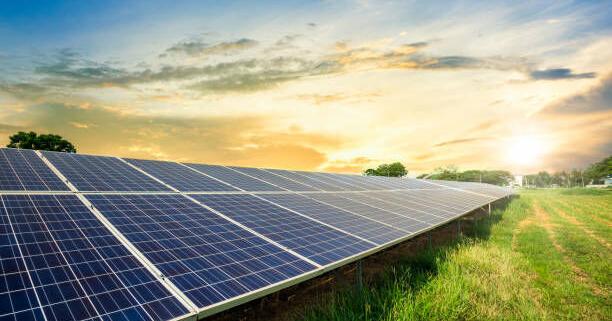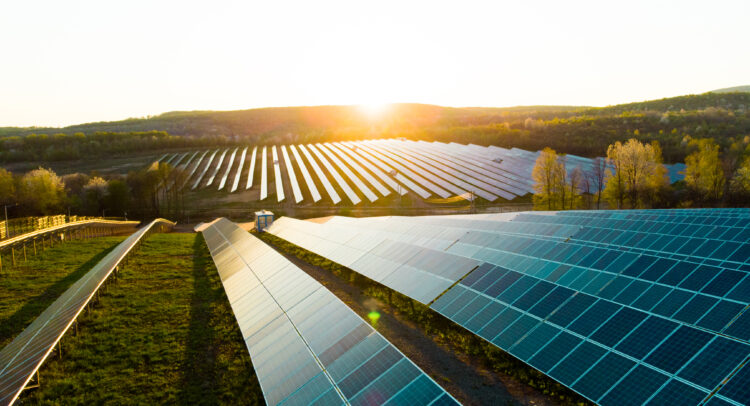It’s an issue that divides communities and stymies lawmakers: Virginia’s clean energy transition depends on building thousands of acres of large solar installations, but the backlash from some rural neighbors makes deployment projects increasingly difficult.
Most of the objections are aesthetic — few people would rather look at rows of solar panels than they once enjoyed the countryside — but some opponents say they worry about the loss of farmland and trees. They fear that the sun is harmful to both the earth and the eyes. It doesn’t help that some early solar developments suffer from corner cuts resulting in soil compaction and erosion. If it’s the sun, a lot of people want no part of it.
In 2022, land conservation groups joined with agricultural and logging interests to lobby for legislation requiring mitigation when a solar project disturbs more than 50 hectares of forest or 10 hectares of “prime agricultural land.” House Bill 206 applies to any solar project developed under Virginia’s streamlined “permit by rule” process, which is available to all but the largest facilities.
People also read…
Ivy Main
The solar industry initially fought the legislation, joined by some climate advocacy groups. No other industry is subject to mitigation requirements, and solar provides more climate benefits than forests and agriculture, they noted. Moreover, the solar panels can be removed and the land returned to agriculture or forestry. In contrast, once the land is converted into a residential area or a strip mall or data center, the damage becomes permanent.
Ultimately, the solar industry accepted compromise language that pushed back the effective date to early 2025 and gave industry members a vote on an advisory panel under the auspices of the Virginia Department of Environmental Quality (DEQ). The law mandated the group to help develop “criteria for determining whether a proposed solar energy project would result in a significant adverse effect on agricultural land or forest land.” any mitigation plan. DEQ was to use the task force’s findings to formulate the regulations.
It turned out that the task force agreed on very little. Its 717-page report found consensus on only a handful of points, and left DEQ tasked with addressing key issues. On May 13, the agency published its proposed rules. The regulations are currently under executive review, after which stakeholders and the public will have an opportunity to comment.
Meanwhile, several things have happened since the passage of HB 206.
In March 2022, DEQ tightened stormwater regulations to address runoff and erosion problems that have given the sun a bad name in some communities. Based on that, the agency released a new stormwater handbook that will take effect July 1, 2024, and includes sections on solar energy development.
Some members of the solar industry complain that DEQ’s stormwater regulations are unduly burdensome, but no one questions the importance of preventing runoff and erosion. In any case, many companies are already using earth-friendly practices that make it easier to comply with stricter regulations. One is the use of terrain trackers, a technology that allows solar power to be installed on uneven terrain instead of bringing in bulldozers to level the terrain. Trackers maximize solar energy production in mountainous areas while protecting topsoil and vegetation.
The new tracker technology is among a suite of low-impact approaches gaining ground as the solar industry matures. DEQ encourages another ecological practice: planting native species between and around solar arrays. Native plants provide food and habitat for insects that have declined dramatically in recent years and threaten our ecosystem. While only a handful of solar projects have achieved DEQ’s pollutant-smart certification to date, most developers I’ve spoken to say they’re open to it.
The practice of using grazing animals for vegetation management is growing rapidly. The sheep have come to a good point: the project owners save money that people would otherwise have to spend on running machinery, and the sheep thrive in the shade of the solar panels and return nutrients to the soil. Already 2% of sheep in the U.S. are grazed under solar panels, according to a webinar by the American Solar Grazing Association, including several large Virginia facilities that provide power to Dominion Energy. Elsewhere, cattle graze beneath solar panels or crops grow between rows, further blurring the gap between solar installations and agricultural use.
Whole area trackers, topsoil protection, native plants and active farming or grazing: all these practices ensure that farmland is not “lost” to sunlight. However, the DEQ’s stricter stormwater regulations, the solar industry’s increasingly soil-friendly practices, and even the passage of HB 206 have not allayed concerns among solar opponents. Instead, rural counties stepped up the pace of bans, bans and moratoriums.
The reason for the continued hostility is not that the opponents are unfamiliar with the ways in which solar can be environmentally friendly, but rather that the main motivation of the opposition is not to protect farmland, it is suspected. If all they really care about is keeping solar from destroying the landscape (“preserving our rural heritage” is a euphemistic frame), then adding a new layer of mitigation requirements won’t change anything.
Admittedly, I have never supported HB 206. From an environmental perspective, solar energy is no worse for the soil than monoculture pine plantations or commodity crops grown with pesticides and petroleum-based fertilizers. When done in a habitat-friendly way, the sun can increase biodiversity and help the soil heal. The sun solves our CO2 problem, even more than trees.
Still, the DEQ’s job was to try to find a middle ground between the solar industry and its detractors, and to be fair, their efforts are getting some things right. The proposed rules recognize that solar installations have degrees of impact, and practices such as leaving topsoil undisturbed or integrating agrovoltaics should be rewarded with lower mitigation requirements. A neat chart describes the different levels of influence and suggests different levels of influence to match. Impact mitigation is mainly in the form of land allocation, but can also be satisfied with a per hectare payment.
And yet the proposal misses the mark on at least three fronts. First, it fails to give full credit to solar energy projects that minimize land disturbance and incorporate agrovoltaics. DEQ should recognize that adoption of best practices should eliminate the need for land allocations or monetary payments.
Second, the proposed regulations make no exceptions for projects owned and operated by local farmers who incorporate solar energy into their farming operations to increase and diversify their income without selling their land. If the point of HB 206 was to protect agriculture, DEQ missed the mark.
Finally, the dollar amounts that DEQ is offering in lieu of land allocations are punitively high with adverse effects. The solar company, which has to pay a stiff penalty, must pass this cost in the form of a higher price for the electricity produced. If a utility has to pay more for electricity, ratepayers ultimately foot the bill.
The alternative is equally counterproductive. I mentioned at the outset that DEQ’s regulatory permitting process is available to all but the largest projects, but it’s not the only path open to developers. Projects above 150 MW are required to go to the SCC for approval, but smaller projects are not barred. If DEQ makes its process too complicated, solar producers will go to DGK instead. The SCC requires the developer to obtain a local permit, but not to use land conservation, agrovoltaic or mitigation techniques.
It would be great if DEQ could turn the lemon that is HB 206 into the lemonade of a solar industry that embraces eco-friendly development practices and incorporates pollinator crops, sheep grazing, and other agrovoltaic businesses. What we have instead is a proposal that could kill the permit-to-rule program without actually turning lemonade into lemons without benefiting anyone.
There is still time to fix it. The DEQ may not be able to solve the solar wars, but a good set of rules can steer Virginia toward making the most of a solar industry that is vital to our future.
Ivy Main is an attorney and longtime volunteer with the Virginia chapter of the Sierra Club. A former employee of the US Environmental Protection Agency, he is currently the renewable energy chair of the Sierra Club. His views are his own and do not reflect those of any organization.
Get the latest news in the review
Get opinion pieces, letters and editorials sent straight to your inbox every week!




